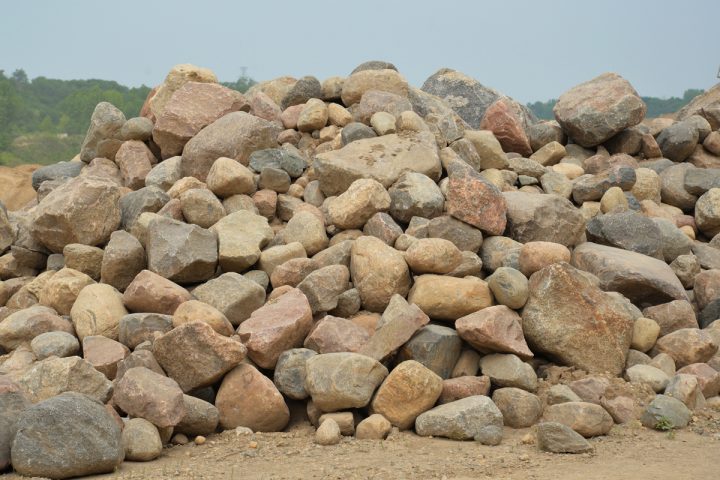Boulders
The geological composition found in our boulders may include granite, limestone, sandstone, and glacial boulders. Every kind of boulder will have its unique characteristics, such as color, texture, and composition, which can influence its uses and suitability for different applications.
Our team can provide detailed insights into the specific types of boulders available and their recommended uses in landscaping and construction projects.
Landscaping Features: Minnesota boulders are frequently used as natural landscaping features. They can be strategically placed to create focal points, anchor garden beds, or enhance the visual appeal of outdoor spaces. Boulders can be arranged in clusters or individually to provide a rugged and natural aesthetic in gardens, parks, or commercial landscapes.
Retaining Walls: Large Minnesota boulders can be utilized in the construction of retaining walls. These walls help stabilize slopes, prevent erosion, and create terraced areas. Boulders can be stacked and embedded into the soil to form a sturdy and visually appealing wall that blends well with the surrounding landscape.
Water Features: Boulders are commonly incorporated into water features such as ponds, streams, and waterfalls. They can be used to create cascades, natural rock formations, or stepping stones across water bodies. Boulders add texture, depth, and a sense of natural beauty to water features, enhancing their overall aesthetics.
Boundary Markers: Large boulders can be used as boundary markers or landmarks on properties. They provide a distinct and permanent indication of property lines or serve as visual markers for entrances, driveways, or pathways.
Seating and Outdoor Living Spaces: In some cases, boulders can be used as seating elements in outdoor spaces. By placing boulders strategically, they can provide seating areas or natural seating walls for gathering spaces, fire pits, or outdoor entertainment areas.
Natural Play Structures: Boulders can serve as elements for natural play structures in parks or playgrounds. Children can climb, balance, and explore these large rocks, fostering imaginative play and interaction with nature.


